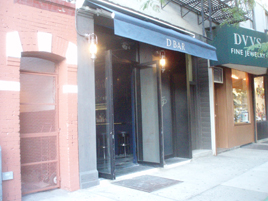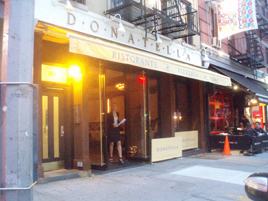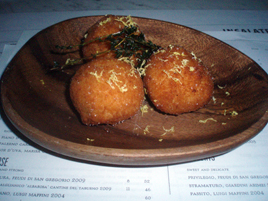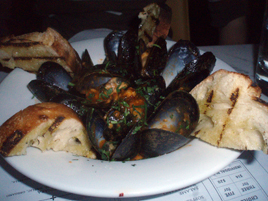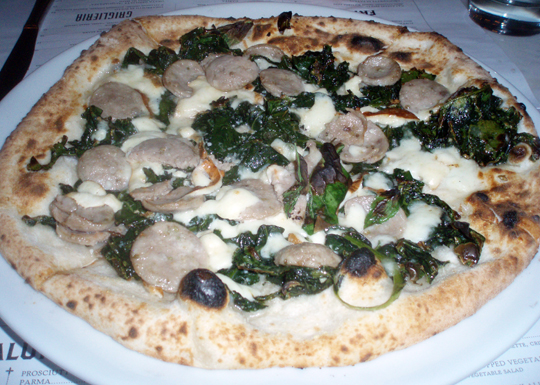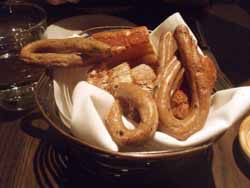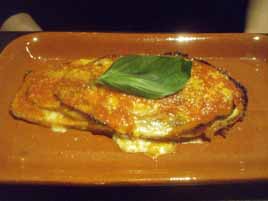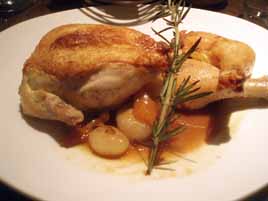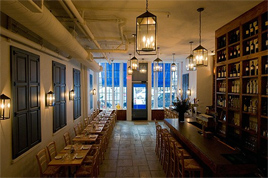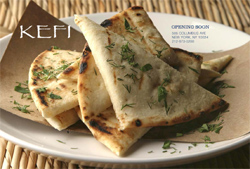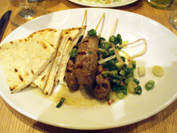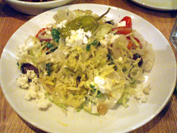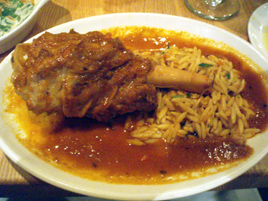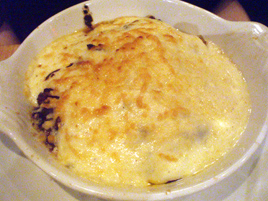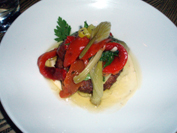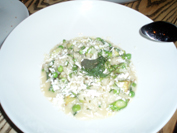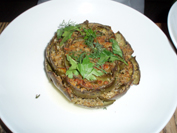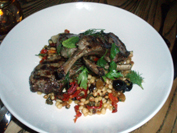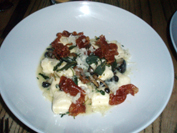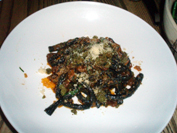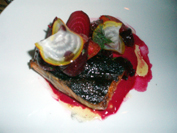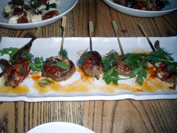Heartwood
 Tuesday, July 1, 2014 at 03:30PM
Tuesday, July 1, 2014 at 03:30PM 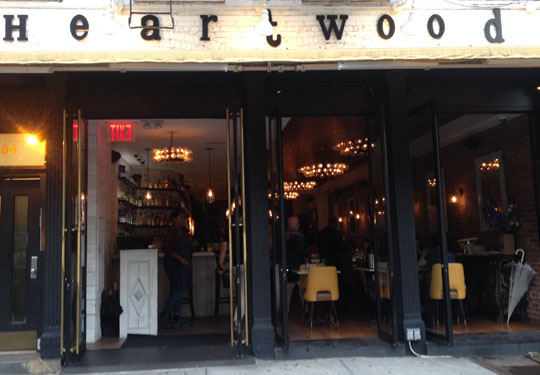
 Note: Heartwood closed in November 2014. We weren’t impressed, so this doesn’t come as a surprise. The restaurant was tweeting out free pizza deals in October, so it was obviously not doing well. Donatella Arpaia, who still controls the lease, expects to replace it with Prova, yet another pizzeria.
Note: Heartwood closed in November 2014. We weren’t impressed, so this doesn’t come as a surprise. The restaurant was tweeting out free pizza deals in October, so it was obviously not doing well. Donatella Arpaia, who still controls the lease, expects to replace it with Prova, yet another pizzeria.
*
The remains of Donatella Arpaia’s once-formidable restaurant empire continue to crumble. Her mediocre pizzeria, Donatella, closed in January after a shade over two years in business.
 Heartwood opened recently in the same space. The pizza oven imported from Naples still dominates the open kitchen, decked out in a sober terra cotta, rather than Donatella’s blinged-out gold plating.
Heartwood opened recently in the same space. The pizza oven imported from Naples still dominates the open kitchen, decked out in a sober terra cotta, rather than Donatella’s blinged-out gold plating.
Ms. Arpaia remains a partner here. There’s an impressive list of other names involved, perhaps too many: Mark Fiorentino, a former bread-maker at Daniel, is in charge of the pizzas. Bradford Thompson (ex. Lever House, Miss Lily’s) writes the rest of the menu. Nick Mautone (ex. Gramercy Tavern, Eighty One) runs the front of house.
Put those folks together, and you get a restaurant designed by committee, with menu categories like: Snacks, Bowls, Salads, Pizzas, Proteins, and “Grains and Veggies”.
It’s priced for a recession we are not currently in, with appetizer-like plates $11–14, entrée-like plates $22–26, pizzas $14–21 (they are easily sharable), and side dishes $8. Unfortunately, many of the dishes read better than they taste.

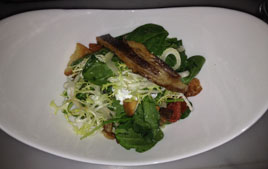
The Bibb and Bacon Lettuce Wraps ($13; above left) aren’t “wrapped” at all. You get three fists of Bibb with chunks of soggy maple-candied bacon perched on top. Slices of tomato and stray droppings of smoked pecan sandwich the bacon, but as soon as you touch it the tower collapses. You eat the piece parts, and I suppose the idea is that they’ll be reunited in your stomach.
On this bacon-happy menu, Warm Spinach and Frisée ($14; above right) is a better bet, as the kitchen has mixed the ingredients together, which is how a salad is supposed to work. There’s a poached egg, maple vinaigrette, and house-cured lamb bacon.


In the photo, you can’t make out the Heritage Pork Chop ($26; above left), as it’s hiding beneath peach chutney and honey-glzed turnips. It never should have left the kitchen at all. Three meager medallions, cooked off the bone, had been roasted to the texture of dry cereal. If pigs could sue for wrongful death, this pig should.
 Pizza was a far happier choice. I’d heartily recommend “When Peter Luger Goes Out For Pizza” ($21; above right), with braised short rib, creamed spinach and horseradish on a charred, thin crust, smoky enough to remind you of a good porterhouse steak.
Pizza was a far happier choice. I’d heartily recommend “When Peter Luger Goes Out For Pizza” ($21; above right), with braised short rib, creamed spinach and horseradish on a charred, thin crust, smoky enough to remind you of a good porterhouse steak.
Duck Fat Potato Wedges ($8; above right) aren’t nearly as compelling as they sound, but they grew on me. You could do a lot worse.
The mostly domestic wine list is short and recent (nothing older than 2011), but fairly priced in relation to the menu. There’s a summery list of slightly-overpriced house cocktails ($15), many with smoky names like the Firecracker Martini (peppered vodka, cucumber, BBQ rub).
Service was friendly, but a bit discombobulated at times: there was a substantial gap between the arrival of my cocktail and Wendy’s glass of wine; another gap between the delivery of my entrée (the pork) and her pizza.
The space is casual, but a little nicer than I remember at Donatella. Sound ricochets off the brick walls and the low pressed-tin ceiling, so be ready for the assault on your eardrums. But the restaurant was full on a Tuesday evening. For a hot summer in Chelsea, this is probably what the neighborhood wants.
Heartwood (184 Eighth Avenue between 19th & 20th Streets, Chelsea)
Food: An uneven menu of American grill standards, salads, pizzas
Service: Casual and discombobulated
Ambiance: Casual and noisy
Rating: Not Recommended (no stars)


